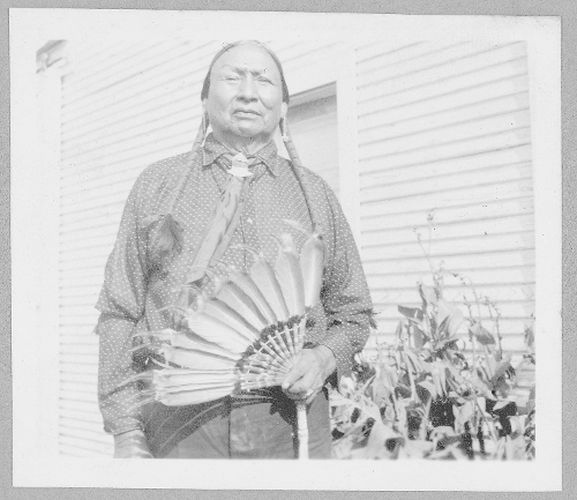Readings Newsletter
Become a Readings Member to make your shopping experience even easier.
Sign in or sign up for free!
You’re not far away from qualifying for FREE standard shipping within Australia
You’ve qualified for FREE standard shipping within Australia
The cart is loading…






Born during the final years of the Kiowa, Comanche, and Apache Reservation, Charles E. Apekaum, grandson of Kiowa chief Stumbling Bear, served as the principal interpreter for the Santa Fe Laboratory of Anthropology field expedition in 1935. Educated, bilingual, and world traveled, Apekaum's services as a translator were sought by anyone who dealt with the Kiowa Indian Agency personnel, politicians, and scholars.
The following year, Apekaum traveled throughout Oklahoma with anthropologist Weston La Barre and ethnobotanist Richard Evans Schultes, serving as their liaison as they documented the peyote religion. During off days, Apekaum narrated his life story to La Barre, recounting the final days of the reservation, allotment, the early days of Anadarko, Oklahoma, his seventeen years attending boarding schools, service in the navy during World War I and then as a state game warden, his work translating for politicians, and his involvement in the Native American Church. La Barre never published the manuscript, which contains rich details about intertribal variants of the sacred peyote rite as well as about Apekaum's life experience.
In Autobiography of a Kiowa Indian Benjamin R. Kracht presents Apekaum's autobiography for the first time. This eyewitness account is an important addition to Native American life narratives and the reconstruction of Kiowa cultural, social, and religious life in the late nineteenth and early twentieth centuries in the southern Great Plains.
$9.00 standard shipping within Australia
FREE standard shipping within Australia for orders over $100.00
Express & International shipping calculated at checkout
Born during the final years of the Kiowa, Comanche, and Apache Reservation, Charles E. Apekaum, grandson of Kiowa chief Stumbling Bear, served as the principal interpreter for the Santa Fe Laboratory of Anthropology field expedition in 1935. Educated, bilingual, and world traveled, Apekaum's services as a translator were sought by anyone who dealt with the Kiowa Indian Agency personnel, politicians, and scholars.
The following year, Apekaum traveled throughout Oklahoma with anthropologist Weston La Barre and ethnobotanist Richard Evans Schultes, serving as their liaison as they documented the peyote religion. During off days, Apekaum narrated his life story to La Barre, recounting the final days of the reservation, allotment, the early days of Anadarko, Oklahoma, his seventeen years attending boarding schools, service in the navy during World War I and then as a state game warden, his work translating for politicians, and his involvement in the Native American Church. La Barre never published the manuscript, which contains rich details about intertribal variants of the sacred peyote rite as well as about Apekaum's life experience.
In Autobiography of a Kiowa Indian Benjamin R. Kracht presents Apekaum's autobiography for the first time. This eyewitness account is an important addition to Native American life narratives and the reconstruction of Kiowa cultural, social, and religious life in the late nineteenth and early twentieth centuries in the southern Great Plains.